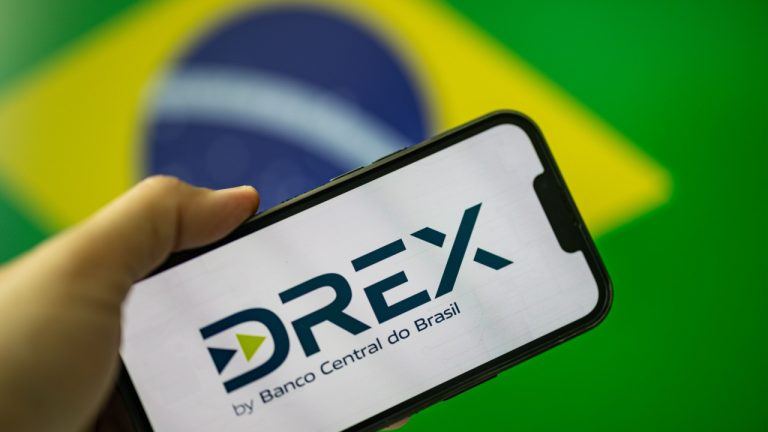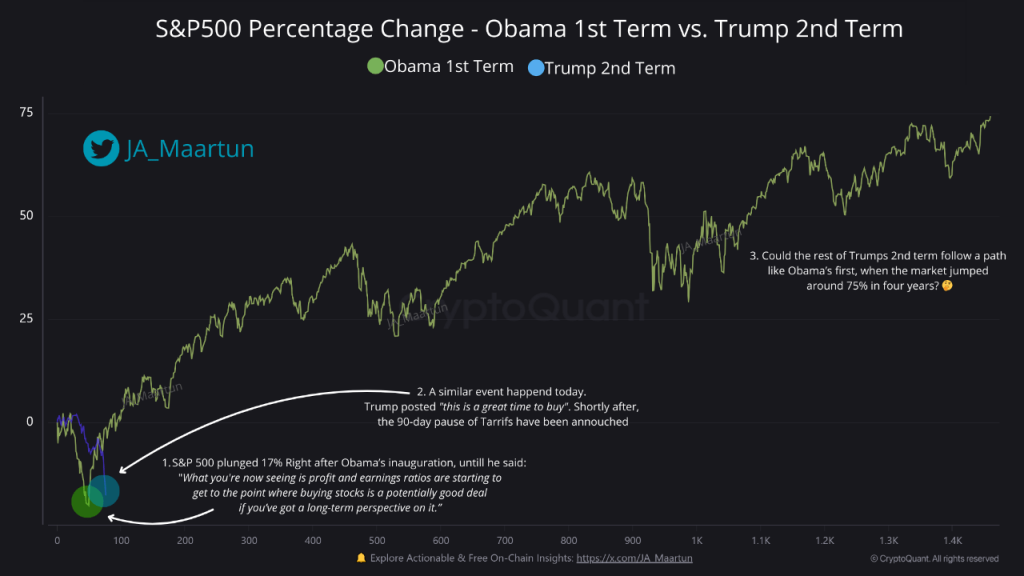Key takeawaysBear raids involve deliberate efforts by whales to drive down crypto prices using short-selling, FUD and large-scale sell-offs to trigger panic and profit from the dip.These raids create volatility, trigger liquidations and damage retail confidence. However, they can also expose weak or fraudulent projects.Signs include sudden price drops, high trading volume, absence of news and quick recoveries, indicating price manipulation rather than natural market trends.Traders can guard against bear raids by using stop-loss orders, diversifying portfolios, monitoring whale activity and trading on reputable, regulated platforms.Not all market moves are organic in the dynamic world of crypto trading; some are engineered to make quick profits. One such tactic is the bear raid, often driven by powerful market players known as whales. These traders strategically use short-selling, where they borrow and sell assets at current prices, aiming to repurchase them cheaper once the price drops. So, how exactly does this tactic play out? This article dives into what a bear raid is and how it functions. It also covers how bear raids impact the crypto market, what the signs are and how retail investors can protect their interests. What is a bear raid?A bear raid is a deliberate strategy to drive down the price of an asset, typically through aggressive selling and the spread of fear, uncertainty and doubt (FUD). The tactic dates back to the early days of traditional stock markets, where influential traders would collaborate to manipulate prices for profit.Execution of a bear raid involves selling large volumes of a targeted asset to flood the market. The sharp increase in supply creates downward pressure on the price. At the same time, the perpetrators circulate negative rumors or sentiments, often through media, to amplify fear and uncertainty. As panic sets in, smaller or retail investors often sell off their holdings, further accelerating the price drop.Bear raids differ from natural market downturns. While both lead to falling prices, a bear raid is orchestrated and intentional, meant to benefit those holding short positions. Natural downturns are driven by broader economic trends, market corrections or legitimate changes in investor sentiment.Bear raids are generally considered a form of market manipulation. Regulatory agencies monitor trading activities, investigate suspicious patterns and penalize fraudulent practices such as pump-and-dump schemes or wash trading. To enhance transparency, they require exchanges to implement compliance measures, including KYC (Know Your Customer) and AML (Anti-Money Laundering) protocols. By imposing fines, bans, or legal action, regulators work to maintain fair markets and protect investors. Regulators attempt to deter cryptocurrency market manipulation by enforcing strict rules and oversight. In the US, the Securities and Exchange Commission (SEC) focuses on crypto assets that qualify as securities, while the Commodity Futures Trading Commission (CFTC) regulates commodities and their derivatives. Under the Markets in Crypto-Assets Regulation (MiCA) law, enforcement in the EU is the responsibility of financial regulators in the member states. Did you know? In 2022, over 50% of Bitcoin’s daily trading volume was influenced by just 1,000 addresses — commonly called whales — highlighting their market-shaking power.Who executes bear raids?In the crypto world, “whales” are big investors capable of executing bear raids. Because of their substantial holdings of cryptocurrencies, whales can influence market trends and price movements in ways smaller retail traders cannot.Compared to other traders, whales operate on a different scale, thanks to their access to more capital and advanced tools. While you might be looking for short-term gains or simply following trends, whales often use strategic buying or selling to create price shifts that benefit their long-term positions. Their moves are carefully planned and can affect the market without you even realizing it.If you are a regular crypto trader, you might be aware of the massive crypto movement between wallets. Such large-scale transfer of crypto causes panic or excitement in the cryptocurrency community. For example, when a whale transfers a large amount of Bitcoin (BTC) to an exchange, it may signal a potential sell-off, causing prices to dip. Conversely, removing coins from exchanges to self-custodial wallets might suggest long-term holding, which can lead to a price upswing.The relatively low liquidity of crypto markets gives whales such influence over crypto trading. With fewer buyers and sellers compared to traditional financial markets, a single large trade can dramatically swing prices. This means whales can manipulate market conditions, intentionally or not, often leaving retail traders struggling to keep up.Did you know? Bear raids often trigger automated liquidations in leveraged positions, sometimes causing crypto prices to nosedive by over 20% in minutes.Real-world examples of whales profiting from falling pricesIn crypto, cases of bear raids are generally hard to confirm due to anonymity. Nevertheless, these examples of incidents when whales made profits from falling cryptocurrency prices will help you understand how such scenarios work:Terra Luna collapse (May 2022)A Bank for International Settlements (BIS) report disclosed that during the 2022 crypto market crash, triggered by the collapse of Terra (LUNA), whales made a profit at the expense of retail investors. Smaller retail investors predominantly purchased cryptocurrencies at lower prices, whereas whales primarily sold off their holdings, profiting from the downturn.In May 2022, the Terra blockchain was briefly suspended following the failure of its algorithmic stablecoin TerraUSD (UST) and the associated cryptocurrency LUNA, resulting in a loss of nearly $45 billion in market value in one week. The company behind Terra filed for bankruptcy on Jan. 21, 2024. FTX collapse (November 2022)In November 2022, close financial ties between FTX and Alameda Research set off a chain reaction: a bank run, failed acquisition deals, FTX’s bankruptcy and criminal charges for founder Sam Bankman-Fried.Yet again, as FTX collapsed, retail investors rushed to buy the dip. Whales, however, sold crypto in bulk right before the steep price decline, according to the same BIS report that discussed the fall of Terra Luna.Graph 1.B illustrates a transfer of wealth, where larger investors liquidated their holdings, disadvantaging smaller investors. Furthermore, Graph 1.C reveals that following market shocks, large Bitcoin holders (whales) reduced their positions, while smaller holders (referred to as krill in the report) increased theirs. The price trends indicate that whales sold their Bitcoin to krill before significant price drops, securing profits at the krill’s expense.Bitconnect (BCC) shutdown (January 2018)Bitconnect, a cryptocurrency promising unusually high returns via an alleged trading bot, experienced a dramatic collapse in early 2018. Despite reaching a peak valuation of over $2.6 billion, the platform was widely suspected of operating as a Ponzi scheme. The token suffered a steep fall of over 90% in value within hours. While this was not a classic bear raid, the sudden exit of insiders and whale sell-offs, combined with negative publicity, created a cascading effect that devastated retail investors.Did you know? Whale wallets are tracked so closely that some platforms offer real-time alerts for their trades, helping retail traders anticipate possible bear raids.How whales execute bear raids in crypto, key stepsIn the crypto space, whales can execute bear raids by leveraging their massive holdings to trigger sharp price drops and profit from the following panic. These tactics typically unfold in a few steps:Step 1: Accumulating a position: Whales begin by taking positions that will benefit from falling prices, such as shorting a cryptocurrency or preparing to buy large quantities once the price drops. Step 2: Initiating the raid: Next, the whale triggers the sell-off by dumping large volumes of the targeted crypto asset. This sudden surge in supply causes the price to drop sharply, shaking market confidence.Step 3: Spreading FUD: To maximize the impact, whales may spread FUD using coordinated social media campaigns or fake news. Rumors like adverse regulatory action or insolvency can spread quickly, prompting retail traders to sell in panic.Step 4: Triggering sell-offs: The combination of visible large sell orders and negative sentiment induces other investors to sell their holdings, amplifying the downward pressure on the asset’s price.Step 5: Profiting from the dip: Once the price plunges, the whale steps in to either buy back the asset at a lower price or close their short positions for a profit.The whales’ playbook: How do they manipulate the market? Crypto whales use sophisticated tactics to carry out bear raids and manipulate the market to their advantage. These tactics give whales an edge over retail traders, enabling them to manipulate prices and profit while the latter are left to deal with the chaos:Trading bots and algorithms: Advanced bots allow whales to execute large sell orders in milliseconds, triggering sharp price drops. Before the market can react, the whales turn the situation in their favor.Leverage and margin trading: Whales rely (to a large extent) on leverage and margin trading to make profits. Borrowing funds enables them to increase their position size and amplify the sales pressure. It triggers stronger market reactions than would be possible with their holdings.Low liquidity on certain exchanges: Whales can place large sell orders in illiquid markets with fewer participants and a low volume of trades, causing disproportionate price drops. They may even manipulate order books by placing and canceling large fake orders, known as spoofing, to trick other traders.Collaborate with other whales: Whales may collaborate with other large holders or trading groups to coordinate attacks, making the bear raid more effective and harder to trace.Impact of bear raids on the crypto market Bear raids can significantly disrupt the crypto market. Here is how they impact different players and the broader ecosystem: Effects on retail traders: Retail investors tend to react overwhelmingly during a bear raid. The sudden price drop and spread of fear often lead to panic selling, resulting in heavy losses for the investors who exit at the bottom. Most retail traders sell emotionally, not realizing they are playing into the whale’s strategy. Broader market consequences: Bear raids increase market volatility, making it riskier for new and existing investors. These events can shake overall confidence in the crypto space, leading to reduced trading activity and investor hesitation. In extreme cases, they can even trigger liquidations across multiple platforms. Potential positive outcomes: Bear raids can sometimes have cleansing effects on the crypto market. Market corrections induced by such raids remove overvalued assets from unsustainable highs. In some cases, these raids may expose weak or fraudulent projects, forcing investors to reassess their choices.Signs of crypto bear raidsBear raids are misleading market moves that resemble genuine downturns, often tricking traders into selling too soon. A quick drop in price may look like the start of a bearish trend, leading to impulsive decisions by retail traders. Often, these dips are short-lived and followed by a swift recovery once the whales take their profits. Recognizing the signs of crypto bear raids is key to avoiding losses.Here are a few signs of crypto bear raids:A sudden price drop that seems to break support levels Spike in trading volume during a market declineQuick rebound after the dipNegative sentiment causing trader panic No major news to explain the dropHow to protect yourself from crypto bear raidsTo safeguard your investments from crypto bear raids, you can use the following strategies:Conduct thorough technical analysis: Regularly analyze price charts and indicators to discern genuine market trends from manipulative movements. Implement stop-loss orders: Set predetermined sell points to automatically exit positions if prices fall to a certain level, limiting potential losses during sudden downturns. Diversify your portfolio: Spread investments across various assets to mitigate risk. A well-diversified portfolio is less vulnerable to the impact of a bear raid on any single asset. Stay informed: Monitor market news and developments to better anticipate and respond to potential manipulative activities. Use reputable exchanges: Engage with trading platforms that have robust measures against market manipulation, ensuring a fairer trading environment.The ethical debate: Crypto market manipulation vs free market dynamicsThe principles of free market dynamics starkly contrast to market manipulation tactics, such as bear raids. Proponents of free markets favor minimal regulatory intervention, arguing that it fosters innovation and self-regulation. A free market is an economic system in which supply and demand determine the prices of goods and services. Still, the decentralized and often unregulated nature of crypto markets has made them susceptible to manipulative practices. Bear raids require coordinated efforts by perpetrators to drive down asset prices, misleading investors and undermining market integrity. Such tactics bring losses to retail investors and erode trust in the financial system. Critics point out that without adequate oversight, these manipulative strategies can proliferate, leading to unfair advantages and potential economic harm. While free market dynamics are valued for promoting efficiency and innovation, the implications of unchecked market manipulation in the cryptocurrency space can be disastrous. Incidents like bear raids highlight the need for balanced regulation to ensure fairness and protect investors.Crypto regulations worldwide for market manipulation tacticsCryptocurrency market manipulation, including tactics like bear raids, has prompted varied regulatory responses worldwide. In the US, the Commodity Futures Trading Commission (CFTC) classifies digital currency as commodities and actively pursues fraudulent schemes, including market manipulation practices such as spoofing and wash trading. The Securities and Exchange Commission (SEC) has also taken action against individuals who have manipulated digital asset markets. The European Union has implemented the Markets in Crypto-Assets (MiCA) regulation to establish a comprehensive framework addressing market manipulation and ensure consumer protection regarding stablecoins.These efforts notwithstanding, the decentralized and borderless nature of cryptocurrencies presents challenges for regulators. Global cooperation and adaptive regulatory frameworks are essential to effectively combat market manipulation and safeguard investors in the evolving landscape of digital finance.Progression articlesLong and short positions in crypto, explainedA beginner’s guide on how to short Bitcoin and other cryptocurrenciesWhat is a bear trap in trading and how to avoid it?This article does not contain investment advice or recommendations. Every investment and trading move involves risk, and readers should conduct their own research when making a decision.







